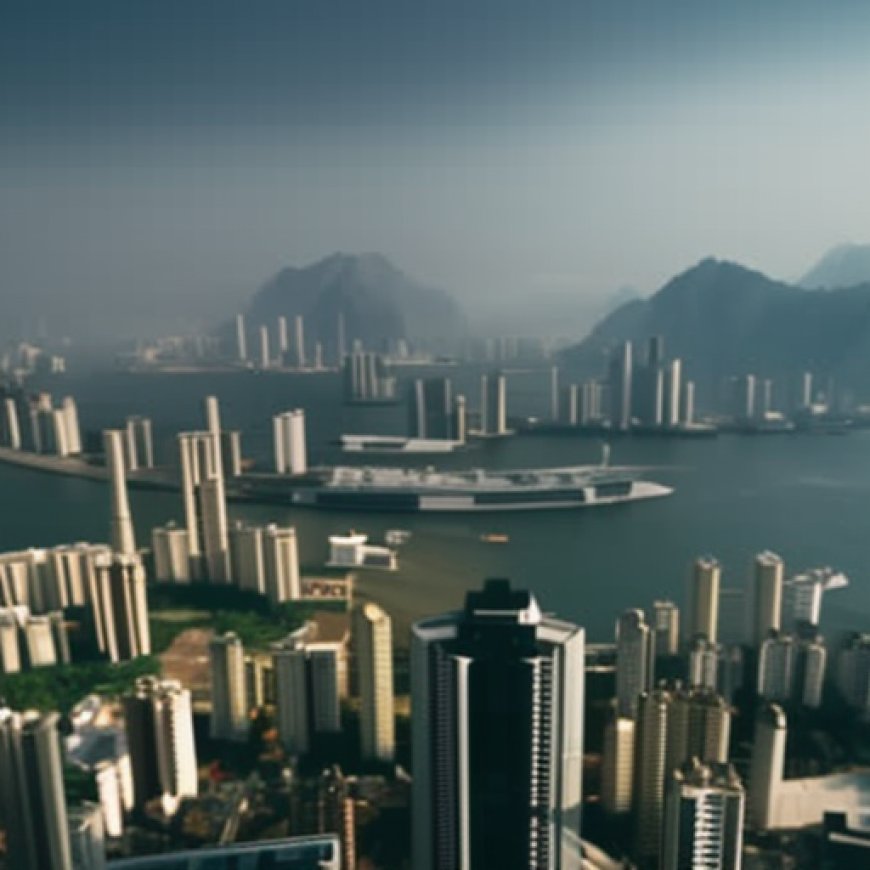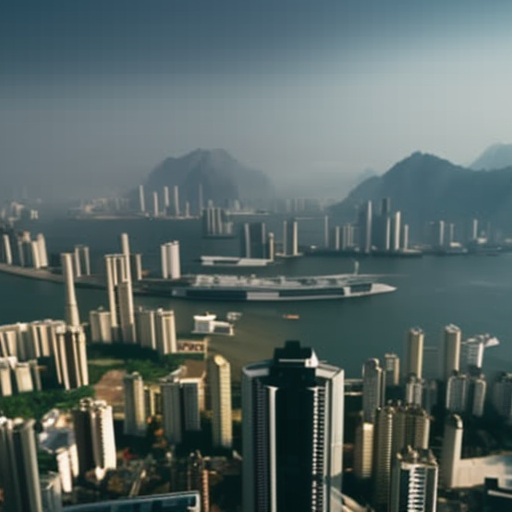20 Most Air Polluted Countries in Asia
20 Most Air Polluted Countries in Asia Yahoo Finance


Air Pollution in Asia
According to the United Nations Environment Programme (UNEP), about 6.5 million people die due to exposure to poor air quality every year. 70% of total deaths due to air pollution occur in Asia and the Pacific. South Asia is the most polluted region in the world. According to the 2023 Air Quality Life Index report, air pollution levels are over 50% higher compared to levels at the start of the century. The polluted air has a substantial impact on health and overall life expectancy. Bangladesh, India, Nepal, and Pakistan account for over half of the total life years lost globally to air pollution. The report states that the average life expectancy in Bangladesh declined by 6.8 years. In India, an average resident lost over 10 years of life. India accounts for over 59% of the global increase in pollution since 2013. The report estimates that by following the World Health Organization’s (WHO) guidelines for PM 2.5 levels, the global average life expectancy can increase by two to three years. South Asian countries such as Nepal and Pakistan can experience even greater additions of 4.6 years and 3.9 years respectively.
Air Pollution Control Market: An Analysis and Major Players
According to a report by Future Market Insights, the global air pollution control systems market was estimated to have reached $84.3 billion in 2023. Moving ahead, the market is expected to grow at a compound annual growth rate (CAGR) of 7.8% and reach $178.8 billion by 2033. The rise in number of automobiles and industries is expected to drive the demand for air pollution control systems. Some of the leading companies operating in the air pollution control market include Mitsubishi Power, Mitsubishi Heavy Industries, Ltd. (OTC:MHVYF), BASF SE (OTC:BASFY), and Thermax Limited (NSE:THERMAX).
Mitsubishi Power
Mitsubishi Power is a subsidiary of the leading heavy machinery company Mitsubishi Heavy Industries, Ltd. (OTC:MHVYF). The company is a leader in air quality control systems, providing air purification solutions by combining technologies such as selective catalytic reduction (SCR), flue gas desulfurization (FGD), and electrostatic precipitator (ESP).
Thermax Limited
Thermax Limited (NSE:THERMAX) is an Indian conglomerate, specializing in energy and environment solutions. Founded in 1966, the company has operations in over 90 countries. It specializes in air pollution control, wastewater solutions, net zero solutions, and clean energy transition.
BASF SE
BASF SE (OTC:BASFY) is a leading chemical company, working toward environmental protection and social responsibility. The country has operations all over the world and operates through six business segments including chemicals, industrial solutions, materials, surface technologies, nutrition, and agriculture solutions.
20 Most Air Polluted Countries in Asia
-
Thailand
Annual Average PM2.5 Concentration (2023): 23.3 μg/m³
Thailand is ranked among the 20 most air polluted countries in Asia. The country has an annual average particulate matter concentration of 23.3 micrograms per cubic meter.
-
Armenia
Annual Average PM2.5 Concentration (2023): 26.4 μg/m³
Armenia ranks 19th on our list. As of 2023, the country has an average PM2.5 concentration of 26.4 μg/m³.
-
Saudi Arabia
Annual Average PM2.5 Concentration (2023): 26.5 μg/m³
Saudi Arabia ranks 18th on our list. The country has an average annual particulate matter concentration of 26.5 μg/m³.
-
Myanmar
Annual Average PM2.5 Concentration (2023): 28.2 μg/m³
Myanmar is one of the most air polluted countries in Asia. As of 2023, the country has an annual average particulate matter concentration of 28.2 μg/m³.
-
Uzbekistan
Annual Average PM2.5 Concentration (2023): 28.6 μg/m³
Uzbekistan is ranked 16th on our list. the country has 28.6 μg/m³ of particulate matter in the air, as of 2023.
Click to continue reading and see the 5 Most Air Polluted Countries in Asia.
SDGs, Targets, and Indicators
-
SDG 3: Good Health and Well-being
- Target 3.9: By 2030, substantially reduce the number of deaths and illnesses from hazardous chemicals and air, water, and soil pollution and contamination.
- Indicator: Annual average PM2.5 concentration (micrograms per cubic meter)
-
SDG 7: Affordable and Clean Energy
- Target 7.1: By 2030, ensure universal access to affordable, reliable, and modern energy services.
- Indicator: None mentioned in the article.
-
SDG 11: Sustainable Cities and Communities
- Target 11.6: By 2030, reduce the adverse per capita environmental impact of cities, including by paying special attention to air quality and municipal and other waste management.
- Indicator: None mentioned in the article.
-
SDG 13: Climate Action
- Target 13.1: Strengthen resilience and adaptive capacity to climate-related hazards and natural disasters in all countries.
- Indicator: None mentioned in the article.
Table: SDGs, Targets, and Indicators
| SDGs | Targets | Indicators |
|---|---|---|
| SDG 3: Good Health and Well-being | Target 3.9: By 2030, substantially reduce the number of deaths and illnesses from hazardous chemicals and air, water, and soil pollution and contamination. | Annual average PM2.5 concentration (micrograms per cubic meter) |
| SDG 7: Affordable and Clean Energy | Target 7.1: By 2030, ensure universal access to affordable, reliable, and modern energy services. | None mentioned in the article. |
| SDG 11: Sustainable Cities and Communities | Target 11.6: By 2030, reduce the adverse per capita environmental impact of cities, including by paying special attention to air quality and municipal and other waste management. | None mentioned in the article. |
| SDG 13: Climate Action | Target 13.1: Strengthen resilience and adaptive capacity to climate-related hazards and natural disasters in all countries. | None mentioned in the article. |
Analysis
-
Which SDGs are addressed or connected to the issues highlighted in the article?
The issues highlighted in the article are connected to SDG 3: Good Health and Well-being, SDG 7: Affordable and Clean Energy, SDG 11: Sustainable Cities and Communities, and SDG 13: Climate Action.
-
What specific targets under those SDGs can be identified based on the article’s content?
Based on the article’s content, the specific targets identified are:
- Target 3.9: By 2030, substantially reduce the number of deaths and illnesses from hazardous chemicals and air, water, and soil pollution and contamination.
- Target 7.1: By 2030, ensure universal access to affordable, reliable, and modern energy services.
- Target 11.6: By 2030, reduce the adverse per capita environmental impact of cities, including by paying special attention to air quality and municipal and other waste management.
- Target 13.1: Strengthen resilience and adaptive capacity to climate-related hazards and natural disasters in all countries.
-
Are there any indicators mentioned or implied in the article that can be used to measure progress towards the identified targets?
Yes, the article mentions the annual average PM2.5 concentration (micrograms per cubic meter) as an indicator to measure progress towards Target 3.9: By 2030, substantially reduce the number of deaths and illnesses from hazardous chemicals and air, water, and soil pollution and contamination.
Behold! This splendid article springs forth from the wellspring of knowledge, shaped by a wondrous proprietary AI technology that delved into a vast ocean of data, illuminating the path towards the Sustainable Development Goals. Remember that all rights are reserved by SDG Investors LLC, empowering us to champion progress together.
Source: finance.yahoo.com

Join us, as fellow seekers of change, on a transformative journey at https://sdgtalks.ai/welcome, where you can become a member and actively contribute to shaping a brighter future.







